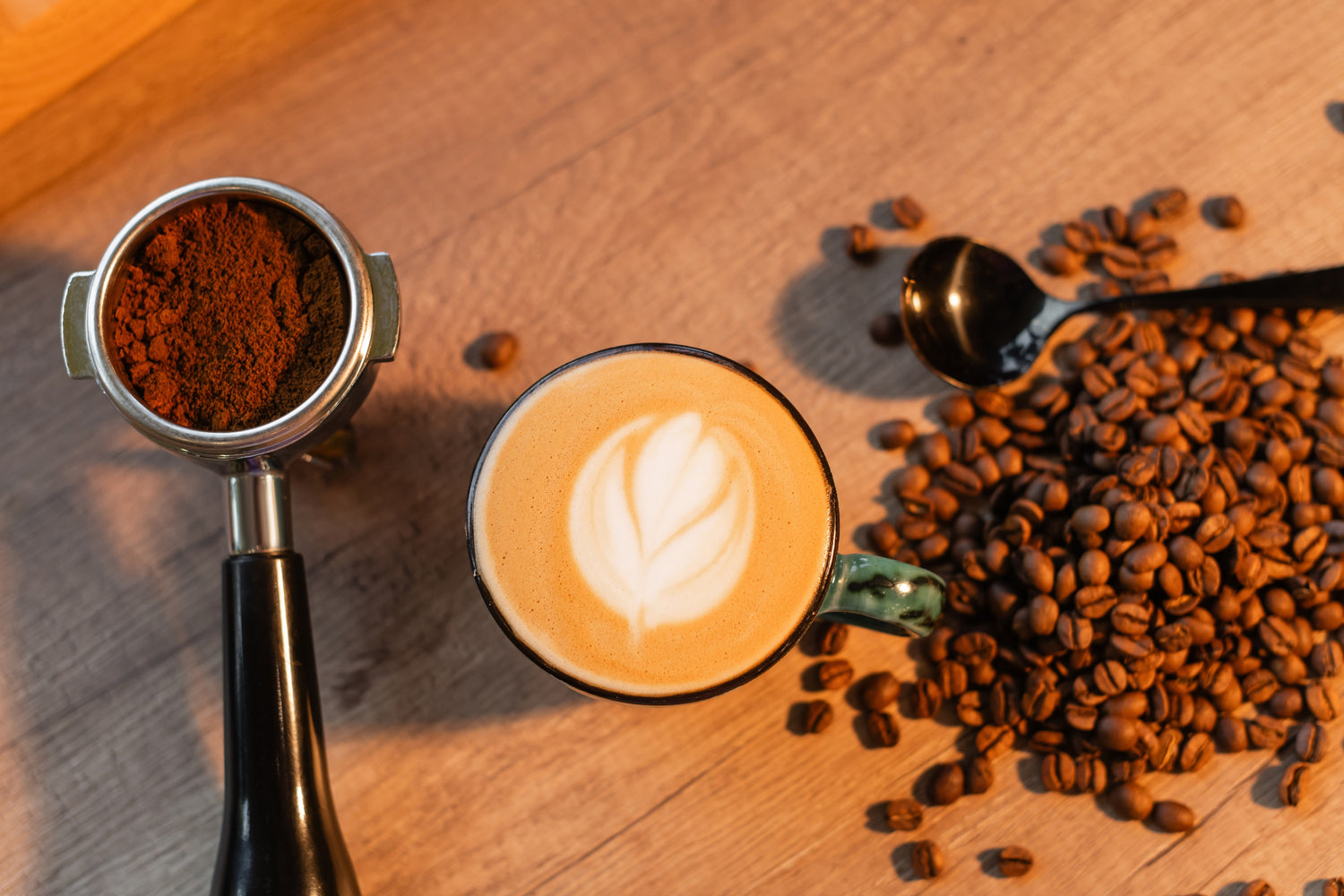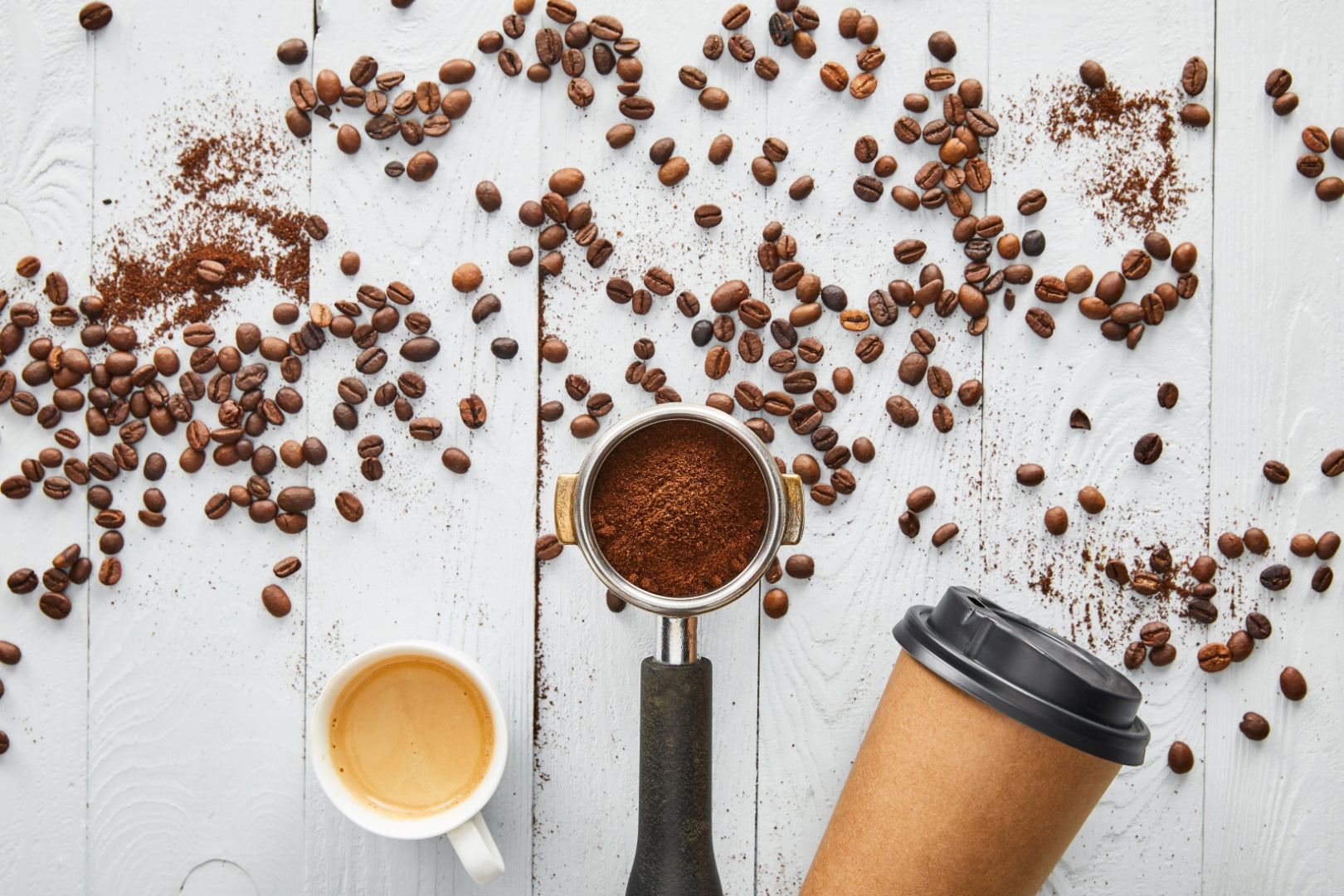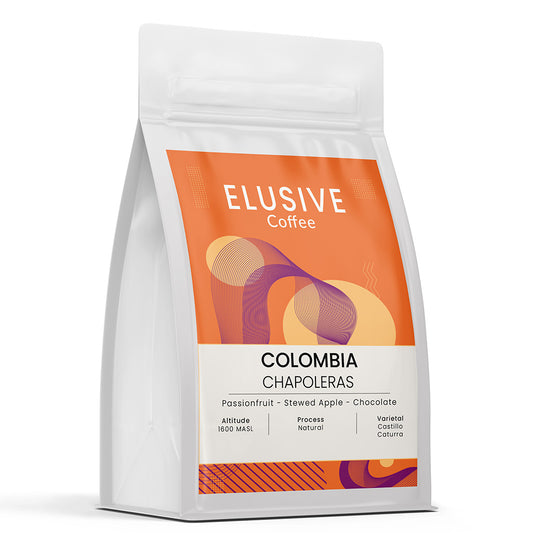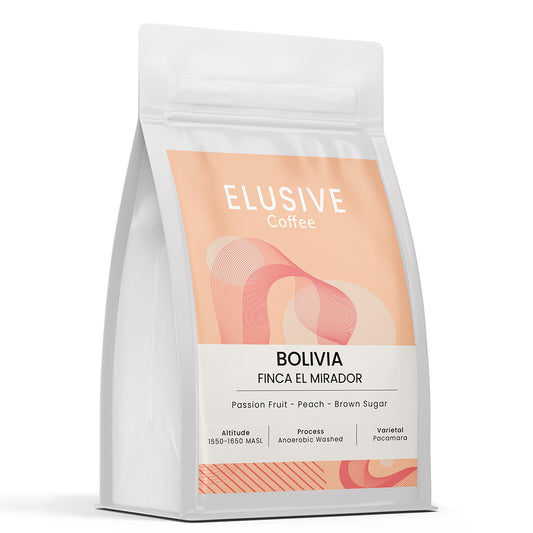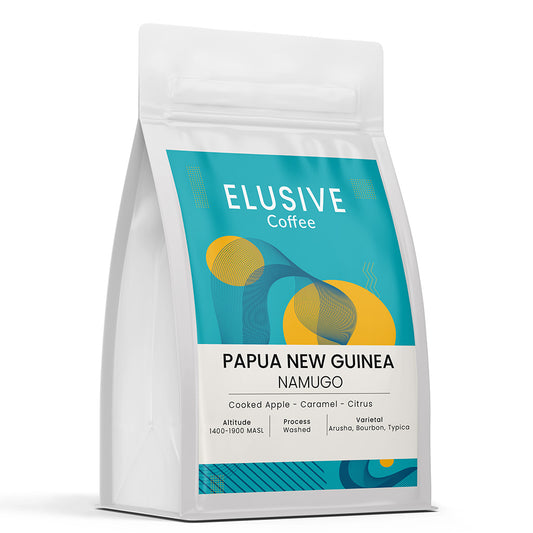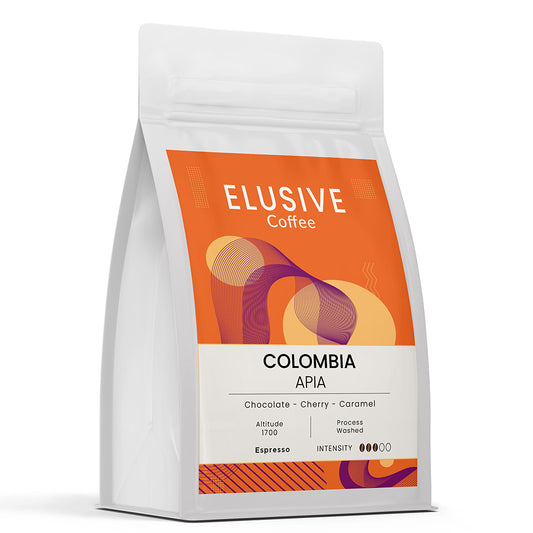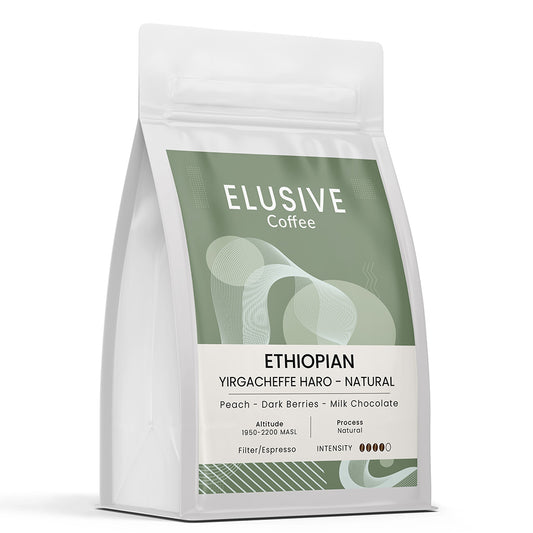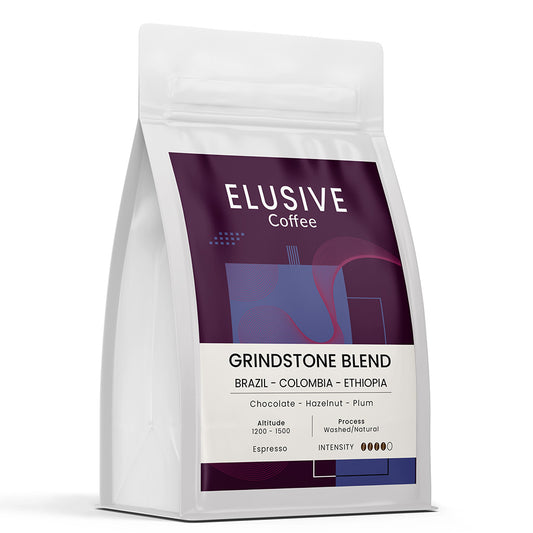
Share

Introduction: The Age-Old Question: To Freeze or Not to Freeze Your Precious Beans?
For many coffee enthusiasts, the idea of freezing coffee beans conjures images of freezer-burned, flavorless granules. It's an age-old debate in the coffee world, often met with skepticism and conflicting advice. Does the freezer truly preserve the magical essence of your favorite brew, or does it diminish the very qualities you cherish? This dilemma leaves many coffee lovers wondering how to best maintain that exquisite coffee freshness.
At Elusive Coffee, a deep commitment to peak flavor drives every roast. This comprehensive guide aims to demystify the art of freezing coffee, empowering enthusiasts to extend the vibrant life of their cherished beans. The goal is to debunk common myths and provide a clear, actionable path to preserving coffee flavor, ensuring every cup of Elusive Coffee is as rich and aromatic as the roaster intended. When executed correctly, freezing is not a compromise but a remarkably powerful tool for extending the enjoyment of specialty coffee.
The Science of Stored Perfection: Why Freezing Coffee Actually Works
Halting the Enemy: Oxidation and Flavor Degradation
Even after roasting, coffee beans are in a constant state of subtle transformation, gradually losing their vibrant flavors and developing undesirable stale notes. The primary culprit behind this unwelcome change is oxidation, a chemical reaction that occurs when delicate aromatic compounds within the beans are exposed to oxygen and room temperatures. This process is akin to how a freshly sliced apple turns brown when left exposed to air, losing its crispness and original taste. The longer coffee sits at room temperature, the more its unique flavor profile dulls and flattens.
This is precisely where freezing steps in as a powerful ally. By significantly lowering the temperature, typically to around -18°C, freezing acts as a "pause button" for these detrimental chemical reactions. This dramatic reduction in temperature doesn't just slow down the degradation process; it profoundly inhibits the changes in volatile compounds that are essential to coffee's character. Scientific studies confirm that lower temperatures dramatically slow the breakdown of key aromatic compounds such as aldehydes, alcohols, pyrazines, and furans, which are directly responsible for the desired aroma and flavor characteristics of coffee. This means that the complex and nuanced aroma and flavor profile that makes specialty coffee so unique is effectively locked in, preserving the specific chemical fingerprint of the coffee's freshness for a much longer period than traditional room temperature storage. The colder the environment, the slower the flavor loss, allowing the delicate oils and compounds to remain intact.
Beyond Freshness: The Practical Perks of Freezing
The benefits of proper coffee freezing extend far beyond mere flavor preservation, offering significant practical advantages for every coffee lover.
- Extended Shelf Life: One of the most compelling advantages is the dramatically extended freshness. When properly frozen, whole coffee beans can maintain their peak flavor and aroma for an impressive 3 to 6 months. This is a substantial improvement compared to the typical 2 to 4 weeks of peak freshness when stored at room temperature. While some sources suggest that freezing can extend the life of beans for "weeks, months, and even years", the 3 to 6-month window is generally considered the sweet spot for experiencing the coffee at its absolute best. Beyond this period, subtle changes may occur, but the coffee will still be far superior to beans left at room temperature for the same duration. This provides a clear expectation for optimal enjoyment while still highlighting the significant extension of usability.
- Convenience and Reduced Waste: Freezing enables a smarter approach to coffee consumption. It allows enthusiasts to purchase larger quantities of their favorite Elusive Coffee roasts when they are at their freshest, potentially saving money and ensuring a consistent supply of high-quality beans. By dividing beans into smaller, single-use portions before freezing, individuals can defrost only what is needed for a brewing session, effectively eliminating waste from beans that might otherwise go stale. This practice not only benefits the consumer's wallet through cost savings but also contributes to reduced food waste, aligning with broader sustainability efforts.
- Flexibility for Occasional Drinkers: For those who don't brew coffee every day, freezing is a game-changer. It ensures that their cherished beans remain vibrant and full of flavor, ready for whenever the craving strikes – whether it's a leisurely weekend indulgence or a much-needed midweek pick-me-up. This flexibility means that every cup can be an exceptional experience, regardless of daily consumption habits.
Your Step-by-Step Guide: How to Freeze Elusive Coffee Beans Like a Pro
Freezing coffee effectively is a simple process, but it requires attention to detail. Follow these steps to ensure your Elusive Coffee beans retain their peak flavor and aroma.
Start with Freshness
The foundation of successful coffee preservation lies in the quality of the beans you start with. It is impossible to freeze in freshness that isn't already present. Therefore, always begin with high-quality, freshly roasted whole beans. Elusive Coffee beans are roasted with meticulous care, making them ideal candidates for this preservation method, as their vibrant flavors are ready to be locked in.
The Right Container is Key
The primary enemies of frozen coffee are moisture and oxygen. These elements cause oxidation, dull flavors, and can lead to freezer burn or the absorption of unwanted odors from the surrounding environment. Additionally, light and heat can accelerate the degradation of delicate flavor compounds.
The solution lies in choosing the right storage vessel. It is crucial to use truly airtight containers or vacuum-sealed bags. These options are superior because they effectively prevent air and moisture from infiltrating and compromising the beans. For added protection against light, opaque containers made of materials like stainless steel, ceramic, or tinted glass are highly recommended. If opting for plastic containers, ensure they are specifically labeled as freezer-approved to prevent cracking due to low temperatures.
It is important to avoid storing coffee in its original packaging for long-term freezing, even if the bag features a one-way valve. While these valves are designed to release carbon dioxide gas produced by freshly roasted coffee, they are often not truly airtight against oxygen for extended storage. This means that despite appearing suitable, many standard coffee bags are insufficient for effective long-term freezing, as they can still allow oxygen to seep in and degrade the coffee. Similarly, regular refrigerators are not suitable environments for coffee storage due to their fluctuating temperatures and high moisture levels, which can cause condensation and flavor absorption.
Portion for Perfection
A critical step in proper freezing is portioning your beans. Avoid freezing all your coffee in one large container. Instead, divide the beans into smaller, single-use portions – ideally enough for a week or just a few days of brewing. This practice is vital because it minimizes the repeated exposure of the entire batch to air and temperature fluctuations each time you retrieve coffee. Repeated thawing and refreezing can introduce moisture and significantly degrade the quality of the beans.
Seal It Tight, Label It Right
Once portioned, ensure your chosen containers are sealed as tightly as possible. If using bags, squeeze out as much air as you can before sealing. Vacuum sealing is the gold standard for removing air and creating an optimal environment for preservation. For glass jars, fill them as much as possible to reduce the empty air space inside.
Finally, always label your containers clearly with the freeze date. This simple step helps you keep track of your inventory and ensures you use your beans within the optimal 3 to 6-month window for peak flavor.
[Image Prompt: A series of small, clearly labeled, vacuum-sealed bags of coffee beans neatly stacked in a freezer drawer, with a hand reaching for one bag.]
The Big Question: How Long Can Your Elusive Coffee Beans Stay Frozen?
When properly frozen using the techniques outlined above, your Elusive Coffee beans can maintain their peak flavor and aroma for an optimal period of 3 to 6 months. This timeframe is widely considered the sweet spot for experiencing the coffee at its most vibrant and flavorful.
While some sources suggest that coffee beans can be frozen for even longer periods, mentioning "weeks, months, and even years", it is important to understand the nuance between extended usability and peak quality. While coffee frozen beyond six months may still be perfectly drinkable and far superior to stale room-temperature beans, the delicate flavor compounds may begin to undergo subtle changes. The 3 to 6-month mark represents the period where the coffee retains its most exquisite and intended sensory experience. This distinction allows for a clear understanding: freezing significantly extends the life of your coffee, but there is a point of diminishing returns for achieving the absolute pinnacle of flavor.
The Thaw & Grind Dilemma: What's Best for Your Brew?
A common point of discussion in the coffee community revolves around whether to thaw frozen beans before grinding them or to grind them directly while still frozen. Both approaches have their passionate advocates and valid arguments.
Option 1: Grinding Frozen Beans Directly
Many experienced coffee enthusiasts opt to grind their beans directly from the freezer, citing several compelling benefits:
- Reduced Oxidation: Grinding frozen beans minimizes their exposure to oxygen during the grinding process, which helps to preserve the volatile compounds that contribute to flavor and aroma.
- Heat Control: Grinding generates friction and heat, which can negatively affect the delicate flavors of coffee. Grinding frozen beans helps keep the temperature lower during this process, protecting the integrity of the beans and contributing to a more aromatic and flavorful brew.
- Consistent Grind: Frozen beans tend to be more brittle and shatter more easily when ground. This can potentially result in a more consistent particle size, which is crucial for even extraction and, ultimately, a better-tasting cup of coffee.
- Convenience: For busy coffee lovers, grinding frozen beans directly eliminates the need to wait for thawing, allowing for a quicker and more streamlined brewing process without compromising flavor.
However, this method does come with a couple of potential drawbacks:
- Moisture Issues: As frozen beans are exposed to warmer ambient air, condensation, often referred to as "sweat," can form on their surface. This moisture can cause the beans to clump together during grinding, potentially leading to an uneven grind and inconsistent extraction.
- Grinder Strain: Not all grinders are designed to handle the added hardness of frozen beans. Less powerful or entry-level grinders may struggle to process frozen beans, potentially leading to uneven results or even causing damage to the grinder over time. The type and quality of your grinder play a significant role in determining the feasibility and effectiveness of this method.
Option 2: Thawing Before Grinding
The alternative approach involves thawing your coffee beans before grinding them. This method offers its own set of advantages:
- Prevents Clumping: Thawing the beans reduces moisture exposure during grinding, preventing them from clumping together and ensuring a more even and consistent grind.
- Protects Grinder: This method is generally safer for less robust grinders, as it reduces the strain on the motor and burrs, potentially extending the lifespan of your equipment.
- Accurate Grind Size: Some argue that thawing allows for more precise grind adjustments, as the beans behave more predictably at room temperature.
If you choose to thaw your beans, proper technique is paramount:
- Prevent Condensation: The most crucial step is to allow the sealed container of frozen beans to reach room temperature before opening it. This prevents condensation from forming directly on the beans themselves, which is the primary concern for moisture damage. If condensation forms inside the sealed container, it will form on the container walls, not on the beans, thus protecting their quality.
- Thawing Time: For small, single-use portions, this might take a few hours. For larger batches, consider thawing them gradually in the refrigerator first to minimize temperature shock.
- Use Promptly: Once thawed and opened, use the beans within a few days, and never refreeze thawed beans. Refreezing can cause significant condensation and further degrade the beans' flavor and texture.

Our Recommendation for Elusive Coffee Lovers:
For most home brewers equipped with quality grinders, the benefits of grinding frozen beans directly often outweigh the minor risk of clumping. The advantages of reduced oxidation, better heat control during grinding, and potentially more consistent particle size can lead to a noticeably superior cup. This is especially true if the beans are ground immediately after being removed from the freezer.
Pro Tip: If clumping becomes an issue or if there are concerns about the grinder's capacity, a simple trick is to allow the beans to rest for about five minutes after removing them from the freezer before grinding. This brief wait allows any superficial condensation to evaporate, mitigating clumping.
Ultimately, the best method depends on individual equipment and personal preference. The most important overarching principle, regardless of whether you thaw or grind frozen, is to keep your beans sealed in their airtight container until the moment they are ready to be ground.
Common Pitfalls to Avoid: Debunking Coffee Freezing Myths
Despite the scientific backing and practical benefits, several persistent myths about freezing coffee continue to circulate. Understanding and avoiding these common pitfalls is key to maximizing your coffee's potential. Many of these misconceptions stem from improper past practices or a misunderstanding of how moisture and temperature interact with coffee. The problem isn't the cold itself, but rather the method of storage and thawing.
Myth 1: "Freezing Coffee Ruins Its Flavor!"
This is arguably the most pervasive misconception. The truth, as explored earlier, is that freezing properly slows down oxidation and preserves the delicate volatile compounds responsible for coffee's rich flavor. The real culprit behind ruined coffee is improper storage, such as exposing beans to moisture, fluctuating temperatures, or excessive air. When done correctly, freezing is a powerful preservation technique.
Myth 2: "Refrigerating Coffee Keeps It Fresh."
The refrigerator is, in fact, one of the worst places to store coffee. Its fluctuating temperatures and high humidity levels are prime conditions for condensation, which can lead to stale or even moldy coffee. Furthermore, coffee beans are naturally porous and will readily absorb odors from other foods in the fridge, resulting in unpleasant, off-flavors in your brew.
Myth 3: "My Original Coffee Bag is Fine for Freezing."
While many coffee bags feature one-way valves, these are primarily designed to allow carbon dioxide to escape from freshly roasted beans, not to create an airtight barrier against oxygen for long-term storage. For effective freezing, a truly airtight, preferably vacuum-sealed, container is absolutely essential to protect your beans from oxygen infiltration.
Myth 4: "Ground Coffee Lasts As Long As Whole Beans."
This is another common misconception. Ground coffee has a significantly larger surface area exposed to air, light, and moisture compared to whole beans. This increased exposure dramatically accelerates oxidation and flavor degradation. For optimal freshness, it is always recommended to freeze whole beans and grind them just before brewing.
Myth 5: "Freezing Damages the Cellular Structure/Essential Oils."
Some concerns have been raised regarding potential cellular damage or loss of essential oils during freezing. However, the overwhelming scientific consensus and empirical evidence from numerous coffee experts demonstrate that proper freezing preserves these delicate compounds by significantly slowing their degradation. Any perceived "damage" or "loss" of flavor is primarily a consequence of moisture, condensation, and temperature fluctuations that occur with *improper* freezing and thawing techniques, not the cold itself. When the correct methods are employed, freezing effectively locks in those precious oils and aromas, ensuring a vibrant cup.
To help navigate these common pitfalls, here's a quick reference guide:
| Do's | Don'ts |
|---|---|
| Freeze only fresh, high-quality whole beans | Freeze coffee that is already old or stale |
| Use truly airtight, opaque containers or vacuum-sealed bags | Use original coffee bags with one-way valves for long-term freezing |
| Divide beans into small, single-use portions | Freeze all your beans in one large container |
| Squeeze out as much air as possible before sealing | Leave excessive air space in containers |
| Label containers with the freeze date | Forget to label or track freeze dates |
| Allow sealed containers to reach room temperature before opening (if thawing) | Open frozen containers immediately upon removal from freezer |
| Grind beans directly from the freezer (with a capable grinder) | Repeatedly thaw and refreeze beans |
| Store away from strong-smelling foods | Store coffee in the refrigerator |
| Use thawed beans within a few days | Refreeze thawed beans |
| Freeze whole beans, not ground coffee | Freeze ground coffee for optimal freshness |
Conclusion: Maximizing Your Elusive Coffee Experience
The journey to a perfect cup of coffee is a delightful one, and understanding how to properly store coffee is a crucial part of that adventure. Far from being a detrimental practice, freezing coffee beans, when done with care and precision, is a scientifically sound and incredibly effective method for extending their peak freshness and preserving their intricate flavor profiles.
By embracing proper techniques – starting with fresh, high-quality whole beans, utilizing truly airtight and opaque containers, portioning wisely, and managing the thawing and grinding process thoughtfully – Elusive Coffee lovers can unlock a new level of enjoyment. This approach minimizes waste, offers unparalleled convenience, and ensures that the nuanced aromas and vibrant tastes you cherish are locked in, ready to be released with every brew.
So, cast aside the old myths and confidently embrace the freezer as your ally in the quest for exceptional coffee. Your future self, and your taste buds, will thank you for always having a truly fresh and flavorful cup of Elusive Coffee waiting.
References
- https://subterracoffee.com/blogs/news/freezing-coffee-pros-cons
- https://spiritanimalcoffee.com/blogs/spirit-animal-blog/expert-advice-on-how-to-store-coffee-beans-for-max-freshness
- https://alexandermills.ca/blog/freezing-coffee
- https://pmc.ncbi.nlm.nih.gov/articles/PMC11675256/
- https://farmandforestcoffee.com/blogs/coffee-blog/freezing-coffee-beans-guide-how-to-freeze-coffee-beans-for-optimal-freshness
- https://winwin.coffee/blog/e64jynaew6011sb7xir4i9j4pshbji
- https://planetarydesign.com/blogs/news/5-common-mistakes-to-avoid-when-storing-coffee-beans
- https://www.jporganiccoffee.com/blogs/home-page/should-i-store-my-coffee-in-the-freezer
- https://www.reddit.com/r/Coffee/comments/6d36ef/defrosting_coffee_before_grinding_and_brewing/
